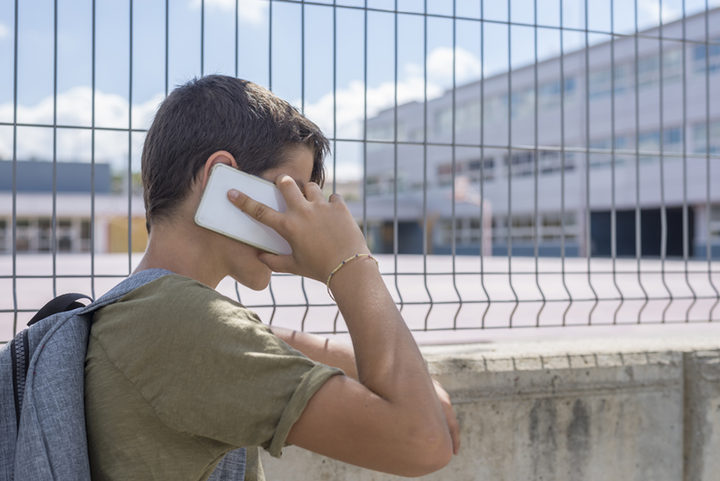
The Battle of New Orleans was fought two weeks after the peace treaty for the War of 1812 was signed.
Why?
It took more than that amount of time to notify British and American troops that the war was over.
Unfortunately, we’re in a similar era of slow communications when it comes to halting or minimizing the injuries, deaths, and traumas associated with what has become the all-too-often tragedies associated with school shootings.
While we may not be able to fully stop these senseless crimes, we can intervene quickly by using up-to-date communications systems that alert and inform students, school administrators, parents and law enforcement agencies about the situation. The technology now exists.
The continuing evolution of the cell phone and innovative apps in recent years have transformed and redefined the way we communicate. Talking with each other has been replaced by emails and texting while providing immediate access to social media platforms such as Facebook, Instagram, and Twitter.
But as with many evolving technologies, the cell phone has become a major part of our lives and its technology is being adapted to protect us during uncertain times. This is certainly the case with securing schools K-12, college campuses, businesses, and houses of worship. It is critical, however, for these entities to utilize an emergency system that has added value on a day-to-day basis, or users will not go to the program automatically when emergencies arise.
School systems nationwide are continually monitoring new security initiatives that will make their campuses safe. We read about these proposals daily with confusion and concern as schools have become targets for violence rather than safe havens for teachers hoping to teach and for students seeking an education.
Armed police officers roam school hallways. Some schools have metal detectors at entrances, while other school systems endorse arming teachers.
All these images are frightening. Budget cuts have eliminated arts, music, and vocational training programs. Parents and administrations wonder how security systems can be implemented while educational programs are being slashed, but inexpensive options are available.
Likewise, initiatives for securing schools have been painfully slow. Keep in mind that our airports and planes appeared to be fully secured within months of the 9/11 tragedy.
The major advantage is that existing technology is currently in place and with sophisticated and affordable tweaks it can be adapted to securing places where large numbers of people congregate, most notably schools or places of worship.
The inadequacies of school communications systems became tragically apparent during the shootings last year at Marjory Stoneman Douglas High School in Parkland, Florida.
Delayed response times and inability to effectively communicate were among the problems which are now being addressed. We’re not pointing fingers, but analysis indicates that from a technological standpoint, the communications systems were antiquatedly resulting in significant delays in response time from law enforcement agencies.
Some of the issues included:
The one common denominator was that virtually all students and administrators were using their cell phones to text, email or post information on social media. Every single 911 call originated from a cell phone. The power of this communications platform must be harnessed and used by schools to address emergencies as well as day-to-day situations such as hallway disturbances, plumbing malfunctions, communications with parents, and updates on classroom/club activities.
Existing app technology can today be bundled into one application that can create secure websites for the school and each class and club. Students and parents can be invited into this secure community and kept fully informed about activities, absences, and grades.
But most importantly, in the event of an emergency appropriate parties – first responders, parents, students, and teachers – can be accurately informed. Keep in mind that communication, accessibility, and speed are at the heart of improved security.
The system can be activated immediately through a cell phone app rather than requiring an administrator to take valuable minutes to walk back to the office to call first responders on a landline. Existing app technology can also accomplish the following:
There are also other advantages to these apps such as:
As we learned following the Parkland tragedy, virtually every communication was done through cell phones. It appeared that every student, teacher, and administrator were using this technology. It stands to reason that we must use this tool to enhance communications to control a crisis. By communicating with “push” communications, which works through Wi-Fi networks, eliminates overloaded cell phone potential during emergencies as well.
Another major advantage of this solution is that students, parents, teachers, and administrators are familiar with using phone apps. They use them every day for basic school management tasks. This familiarity will lead to more efficient communications in the event of an emergency.
Many public-school systems are considering the implementation of these apps. Some are lobbying their school districts, school board members, and politicians to consider these communications tools. Private and charter schools, nationwide, have covered the costs of this system through fundraisers or have prioritized budgeted funds for this important addition.
The key point to remember is that this type of communications system is part of a layered approach to securing our schools. In addition to the security function, the practicality of teacher-student and parent-teacher communication is also significantly enhanced on a day-to-day basis to increase the educational component.
Source link: securityinfowatch.com

